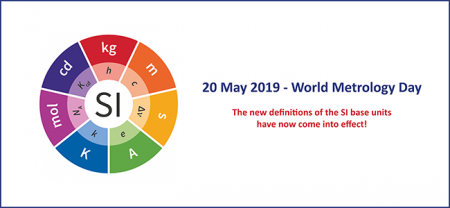Redefined Units of Kilogram, Kelvin, Mole and Ampere across the World 21/05/2019 – Posted in: Blog – Tags: BIPM, International Bureau of Weights and Measures, SI unit of Kilogram
THE KILOGRAM HAS CHANGED
For: Preliminary & Mains
Topic covers: New Definitions, Why the change, What does not change, National Physical Laboratory, International Bureau of Weights and Measures (BIPM)
News Flash
The kilogram is no longer what it used to be. It still means the same amount of mass as before, but the way it is defined changed across the world on, World Metrology Day – 20 May, 2019.
Along with the kilogram, the units of current (ampere), temperature(kelvin ), and amount of substance (mole) too took on new definitions. That covers all seven fundamental units.
- In India, schools and technical institutes have been advised to incorporate the change in their syllabi.
- The National Physical Laboratory (NPL), custodian of the fundamental units of measurement, has sent recommendations to the NCERT, the All India Council for Technical Education, the IITs, the NITs, and other institutions.
Emergence of New Definition
Using a machine called a Kibble balance, in which the weight of a test mass is offset by an electromagnetic force, the value of the Planck constant was fixed, the kilogram was redefined, and the date for the new definition was fixed for May 20, 2019.
Background
- Scientists have long stressed that the fundamental units should be defined in terms of natural constants.
- On November 16, 2018, following a vote at BIPM, representatives of 60 countries agreed that the kilogram should be defined in terms of the Planck constant.
- The Planck constant is a quantity that relates a light particle’s energy to its frequency.
Why the change?
- The global standards for measurement are set by the International Bureau of Weights and Measures (BIPM), of which India became a member in 1957.
- At BIPM in Sèvres, near Paris, stands a cylinder of platinum-iridium locked in a jar.
- Since 1889, the kilogram has been defined as the mass of this cylinder, called Le Grand K, or International Prototype Kilogram (IPK).
- In India, NPL maintains the National Prototype Kilogram (NPK-57), which is calibrated with IPK.
- The IPK was the last physical artifact used to define any of the fundamental units.
What does not change?
- What was 1 kg earlier is still 1 kg today.
- All that has changed is the definition, for the sake of accuracy.
- A mass measured as 1 kg earlier would have meant 1 kg, plus or minus 15-20 micrograms. Using the new definition, a mass measured as 1 kg will mean “1 kg, plus or minus 1 or 2 nanograms”.
Measure for measure
- The new definition for kilogram fits in with the modern definitions for the units of time (second) and distance (metre).
- Today, the second is defined as the time it takes for a certain amount of energy to be released as radiation from atoms of Caesium-133. Once the second was defined, the metre fell into place.
- By its modern definition, a metre is the distance travelled by light in vacuum in 1/299,792,458 of a second (which is already defined).
- This is where the Planck constant comes in. It has been measured precisely at 6.626069… × 10^(-34) kilograms per second per square metre. With the second and the metre already defined, a very precise definition for the kilogram follows.
- Along with the units of time and distance, the unit of luminous intensity (candela) is already defined in terms of a natural constant.
Benefits of New Definition
- The modern definition of the second has already helped ease communication across the world via technologies like GPS and the Internet.
- Scientists have often been quoted as saying the change in the kilogram’s definition will be better for technology, retail and health.
National Physical Laboratory
- It is the measurement standards laboratory of India, situated in New Delhi.
- It maintains standards of SI units in India and calibrates the national standards of weights and measures.
- The National Physical Laboratory, India was set up in 1900 is one of the earliest national laboratories set up under the Council of Scientific & Industrial Research.
- Jawaharlal Nehru laid the foundation stone of NPL on 4 January 1947.
- Dr. K. S. Krishnan was the first Director of the laboratory.
- The main building of the laboratory was formally opened by Former Deputy Prime Minister Sardar Vallabhbhai Patel on 21 January 1950.
International Bureau of Weights and Measures (BIPM)
The BIPM is an international organization established by the Metre Convention, through which Member States act together on matters related to measurement science and measurement standards.
- Its vision is to be universally recognized as the world focus for the international system of measurement.
- Its mission is to work with the NMIs of its Member States, the RMOs and strategic partners world-wide and to use its international and impartial status to promote and advance the global comparability of measurements for:
- Scientific discovery and innovation,
- Industrial manufacturing and international trade,
- Improving the quality of life and sustaining the global environment.
Objectives of BIPM
- To represent the world-wide measurement community.
- To be a centre for scientific and technical collaboration.
- To be the coordinator of the world-wide measurement system.
Source: Indian Express
You can follow us on LinkedIn and for more updates related to UPSC IAS Preparation, Like our Facebook Page and subscribe our Diligent IAS Youtube Channel
Also Read Related Daily News


